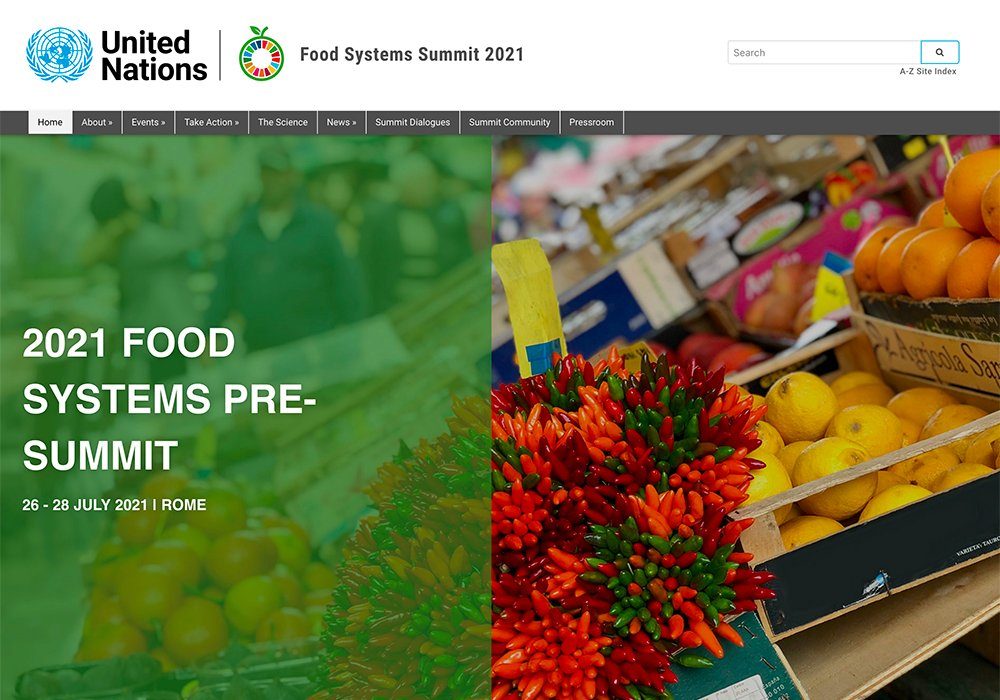UN summit could be ‘watershed moment’ for ag

An event occurring this September will transform agriculture, say industry officials.
“We are on the forefront of a new revolution in our industry,” said Berry Marttin, member of the managing board of Rabobank.
The catalyst for that revolution will be the United Nations’ Food Systems Summit, which will be held in New York this fall.
“It’s the first step of a Paris for food,” Marttin said during a recent Zoom meeting hosted by the United States Soybean Export Council.
He is referring to the Paris Agreement, a legally binding international agreement on climate change adopted by 196 parties in 2015 and implemented in 2016.
It was that UN Conference of the Parties (COP) meeting in Paris in 2015 that got the ball rolling on the upcoming Food Systems Summit.
Delegates attending the COP meeting learned that food production was responsible for 12 gigatons of the world’s annual greenhouse gas emissions.
“When we did Paris, suddenly everybody woke up and said, ‘whoa, food is really (emitting) a quarter of our emissions,’” said Marttin.
The UN says the summit is part of the Decade of Action to achieve its Sustainable Development Goals by 2030.
“The summit will awaken the world to the fact that we all must work together to transform the way the world produces, consumes and thinks about food,” states the UN on a website dedicated to the summit.
“The summit will provide an opportunity to unleash ambitious new actions, innovative solutions and plans to transform our food systems.”
Gord Bacon, former chief executive officer of Pulse Canada, said this event is going to be a game-changer.
“I really think the UN Food Systems Summit is going to be a watershed moment,” he said in a March interview.
The short-term objective of the summit will be to convince consumers, food companies and governments that action is needed.
“I don’t agree with some of the comments they’re making, but they will succeed in their agenda, which is to create an action plan for change,” said Bacon.
He thinks farmers need to play a pivotal role in determining the plan.
He said agricultural producers must convince policymakers that the action plan can’t be based on a global analysis. It needs to be ecosystem specific.
Bacon cringes at the notion that plant protein has a lower environmental impact than animal protein.
“I grew up in Ogema. We had a half section of pasture, which was never going to be cultivated. It was too rocky. It was too steep,” he said.
Grazing animals was the best use of that land.
“We have to move beyond these simplistic arguments that animal protein isn’t as good as plant protein. Not true,” said the man who helped create Canada’s pulse industry.
Marttin believes one of the outcomes of the summit will be new food labelling legislation adopted around the globe.
“Today we have two things on labels that are very clear: one is the price; the other one is the calories,” he said.
In the future, he anticipates labels will include two more bits of information — emissions and water use. Those two additional items will help consumers determine which foods are more environmentally friendly.
Another objective of the summit will be to decide on a “common language” for determining things like emissions and water use levels for various food items.
Marttin said there are a plethora of environmental certification systems in the marketplace and that is contributing to consumer confusion and skepticism.
“Let’s sit together and let’s agree on the standards we want,” he said.
He would like to see a system for calculating the “cost of nature” for various foods, so people realize that consuming fruit produced in a heated greenhouse in a cold climate is not very environmentally friendly.
“As we put a price on nature, a lot of this demand and movement of food is going to change,” said Marttin.
“Nature tells us where we should produce what.”
Agricultural technology also needs to be revolutionized, balancing the focus on maximizing yields with minimizing the environmental footprint.
An example would be developing crops with bigger root systems that will deliver higher yields in conjunction with increased carbon sequestration, he said.
Bacon said there needs to be incentives for farmers to do the right thing. For instance, the technology already exists for making nitrogen fertilizer that releases less nitrous oxide.
But farmers don’t use it because it costs more money and there are no agronomic advantages. Maybe crop inputs that are better for the environment should be taxed at lower rates than other inputs, he said.
A good example of effective environmental incentives is the long-running U.S. Conservation Reserve Program that pays farmers to idle land, said Bacon.
Marttin said lending institutions need to get on board with this new way of thinking about agriculture by creating incentives of their own.
To that end, Rabobank has started the Rabo Carbon Bank, a pilot program connecting carbon farmers with corporations seeking to meet their net-zero commitments.
One of the goals of the project will be to encourage legislation that will allow carbon sequestration to be used as collateral when securing a bank loan.
Source: producer.com

